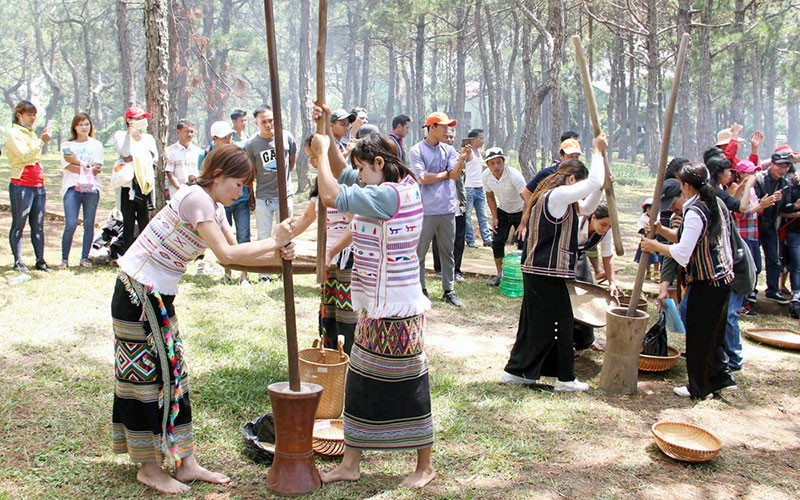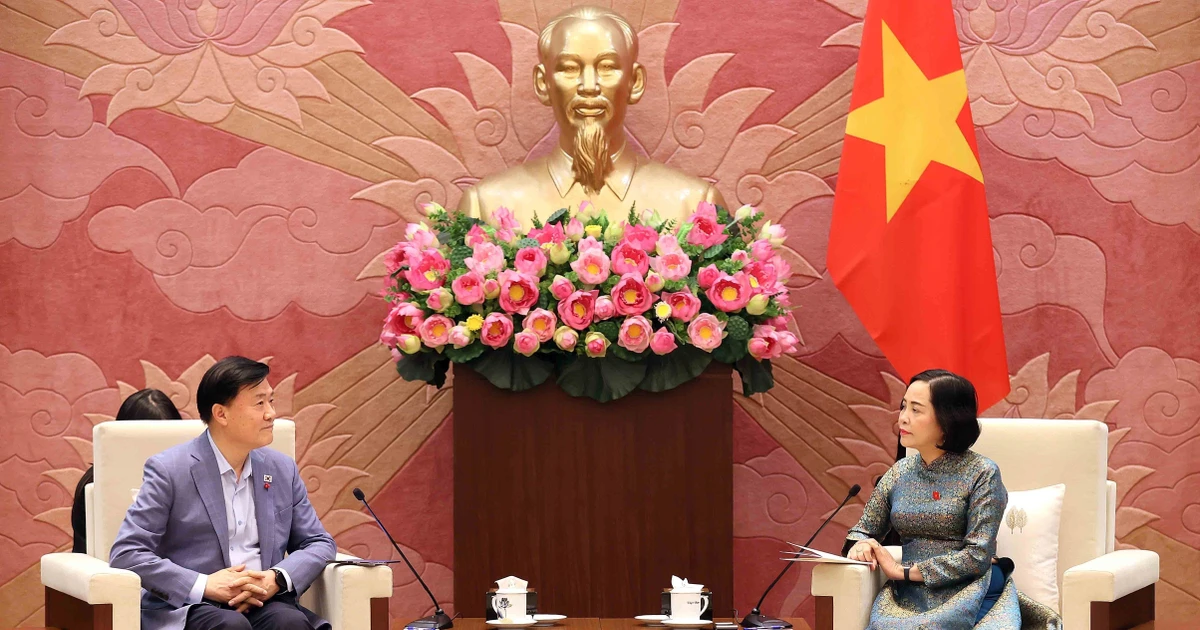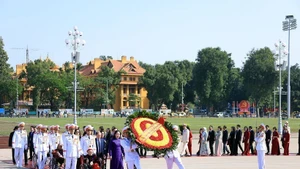The Central Highlands consists of five provinces namely Kon Tum, Gia Lai, Dak Lak, Dak Nong and Lam Dong. The land of many legends is home to nearly 6 million people and 54 ethnic groups; of which ethnic minorities are nearly 2.2 million people. Over the past time, the Party and State have implemented many resolutions, organised many programmes and concentrated investment resources to develop the Central Highlands.
Vitality on the land of bazan soil
Over the past decades, the Party and State have paid great attention to implementing many resolutions, concentrating great resources to develop the Central Highlands. Especially when Resolution No.10 of the 9th Politburo and Decision No.168 of the Prime Minister on socio-economic development, ensuring security and defence in the Central Highlands were issued, resources have been focused on increasing investment, step by step arousing the potential and advantages of this strategic land.
The core is the solidarity and joint contribution of the people; with the attention and investment of the Party and State and the participation of the whole political system, Ea Tul has a fresh face like today, said Y Tiep Nie Kneng, Deputy Secretary of the Party Committee of Ea Tul Commune, Cu M'gar District, Dak Lak Province.
Lam Dong Province is home to 47 ethnic groups, of which ethnic minorities account for more than 25.7%. The whole province currently has 5 districts and 107 out of 111 communes that meet the new rural standard, the GRDP per capita in 2022 reached 77.6 million VND, the highest in the Central Highlands.
“Achieving the above results is thanks to the attention, direction and support from the Government, ministries and branches; the efforts of the Party committees and local authorities and the consensus and sense of self-improvement of the people”, said Deputy Secretary of the Provincial Party Committee, Head of the Lam Dong Provincial National Assembly Delegation Tran Dinh Van.
In the North Central Highlands, all levels and sectors of Kon Tum Province are drastically implementing the resolution of the Provincial Party Committee on improving the investment and business environment, enhancing competitiveness and investment attraction in the region.
Y Pot, Chairwoman of the Board of Directors of Dak Vien Women’s Community Cooperative, Te Xang Commune, shared: “The development orientation of the Central Highlands over the past time of the Party and State is very appropriate; thereby changing the face of urban and rural areas on this land”.
According to Politburo’s assessment, after 20 years of implementing Resolution No.10 of the 9th Politburo, the Central Highlands has changed. The economic scale of the region increases rapidly, reaching about 287 trillion VND in 2020, 14 times higher than in 2002.
The average GRDP in the period 2002-2020 was nearly 8%, the GRDP per capita in 2020 reached 48 million VND, 10.6 times higher than in 2002. In 2023, the first year the Central Highlands provinces are implementing Resolution 23-NQ/TW of the Politburo has been placed on a rather favourable socio-economic background, with the growth rate of the provinces reaching from 7.6% to more than 12%.
The Central Highlands has also become a large-scale production of several key agricultural products, accounting for a high proportion; attractive eco-cultural tourism areas; cultural values of ethnic groups have been preserved, inherited and promoted.
The development orientation of the Central Highlands over the past time of the Party and State is very appropriate; thereby changing the face of urban and rural areas on this land.
Y Pot, Chairwoman of the Board of Directors of Dak Vien Women’s Community Cooperative, Te Xang Commune
The education and training system has received attention and investment, the health network has been consolidated; conservation of nature, biodiversity and protection of water sources has been focused; political security, social order and safety have been ensured; the confidence of ethnic minorities in the Central Highlands towards the Party and State has been consolidated and strengthened.
Socio-economic infrastructure, especially transport infrastructure, has received attention and investment, greatly improving the connection between provinces in the region, and between the region and the whole country.
Currently, the Central Highlands inter-regional traffic system is relatively developed, with 19km of highways and more than 3,100 km of national highways connecting to the central coastal provinces, the Southeast region and seaports, expanding trade opportunities with major centres in the country and countries in the region.
Breakthrough, comprehensive and sustainable development
The Central Highlands is a land with many potentials and advantages to “activate” to become a development resource, with a total agricultural land area of more than 5 million hectares, accounting for more than 91% of the natural land area; the region has great potential for developing the energy industry, is rich in minerals and is the national bauxite production centre; the mild climate is very suitable for the development of high-quality agriculture; forest area of more than 3 million hectares, diverse landscapes, terrain, rivers, streams, waterfalls along with unique culture are great potentials for the development of forestry economic sector, eco-tourism and culture.
However, according to the assessment, despite having many outstanding potentials and advantages, the Central Highlands has not developed commensurately. At the Conference to implement the Government’s Action Programme to implement Resolution No.23 and promote regional investment, the Prime Minister asked the Central Highlands to be self-reliant and take internal resources as the basic, breakthrough and long-term strategy.
According to the Road Network Plan approved by the Prime Minister, the Ministry of Transport expects the total investment capital demand for highways connecting the Central Highlands to be about 156 trillion VND.
By 2030, several important transport infrastructures are expected to be completed, such as the Quy Nhon-Pleiku, Khanh Hoa-Buon Ma Thuot, Gia Nghia-Chon Thanh, Tan Phu-Bao Loc, Bao Loc-Lien Khuong expressways; expanding and upgrading Lien Khuong Airport to level 4E and Pleiku Airport to level 4C; expanding Buon Ma Thuot airport; restoring and upgrading the Thap Cham-Da Lat railway to serve tourists.
Resolution No.23 sets the target that the Central Highlands achieves the average growth rate of GRDP in the 2021-2030 period from 7-7.5%; by 2030, the GRDP per capita will reach about 130 million VND.
Secretary of the Dak Lak Provincial Party Committee Nguyen Dinh Trung affirmed that Resolution No.23 is the special concern of the Party and State towards the Central Highlands, meeting the aspirations of the Party Committee, the government and the people and becoming the driving force for the development of the provinces in the region.
The linkage and development cooperation between the five Central Highlands provinces will create motivation and synergy to support each other to develop and solve national and global problems.
Secretary of the Lam Dong Provincial Party Committee Tran Duc Quan
Agriculture, tourism services, and forest economy are identified as "pillars" of socio-economic development in the Central Highlands. The fundamental solution for the rapid and sustainable development of the Central Highlands is that each locality must renew its thinking about regional and intra-regional linkages.
“The linkage and development cooperation between the five Central Highlands provinces will create motivation and synergy to support each other to develop and solve national and global problems,” said Secretary of the Lam Dong Provincial Party Committee Tran Duc Quan.
The Central Highlands forest has a great influence on the socio-economic life of ethnic minorities, and plays an important role in political security, ecological environment, biodiversity and water source protection, regulating climate for the region. The Government has set a target that by 2030, the forest cover rate of the Central Highlands will reach over 47%.
Referring to the advantages and specific characteristics of education in the Central Highlands, Minister of Education and Training Nguyen Kim Son said, that of the six socio-economic regions, the Central Highlands is the one that the Party, the National Assembly and the Government are paying special attention to.
The whole country loves and looks towards the Central Highlands. That is the advantage. However, education in the Central Highlands is having to carry out a heavier task than in other regions. The Ministry and localities will work together for the common development of education in the Central Highlands, Minister Son added.
















